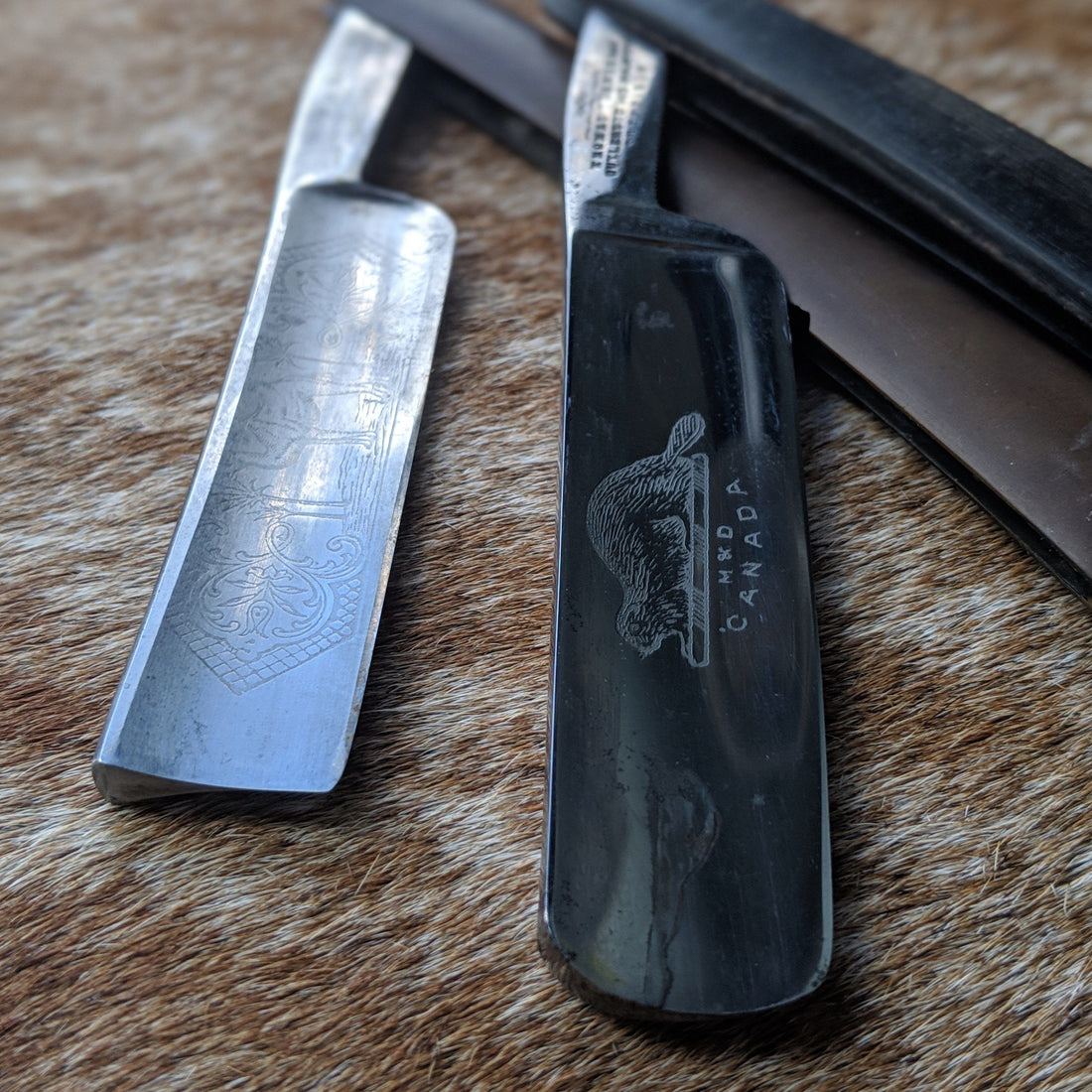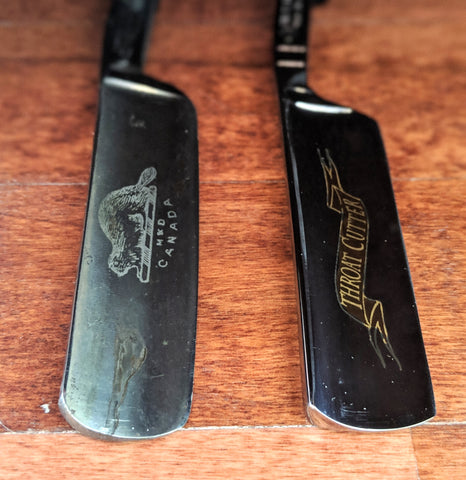
Tips for Buying a Vintage Straight Razor
If you're looking for a straight razor, there are many things to consider. New or vintage? Japanese or Western? Well, if your mind is set on a vintage razor, you won't immediately have the peace of mind you get when buying new, but there are still many great vintage razors out there. There's no guarantee, even when following this guide, that you'll end up with a good-quality razor, but here's the best way to end up with one that will last for many more years.
The Brand
There are many trusted brands out there, and there are also many brands that don't have quite the same expectation of quality. Before looking at the condition of the blade or scales, it's good to see if it's a well-respected brand.
Some good quality brands to look for are Waterville, Wester Bros, Imperial, Anchor, Case (W.R. Case & Sons), Winchester, Sta-Sharp, Dorko, Dubl Duck, Dovo, Boker, and Theirs-Issard. Just remember that this is nowhere near a comprehensive list.
It is important to note that if the razor has no name, make, and origin mark, then you should not buy it.
The Blade
The razor you buy should be free of rust. Now, pristine vintage razors are hard to come by, so focus instead on the cutting edge. If this isn't prioritized, you can face issues, since the thinness of the steel can cause pitting and rust to quickly penetrate the interior of a blade, weakening the steel and making it impossible to shave with. For this reason, there should be nothing marking or marring the edge of the blade, nor should there be any large chips or pits anywhere near the blade's edge. An extremely small chip isn't necessarily the worst thing, but remember that it will have to be ground out, which means the whole blade will have to be ground down.

As a general rule, look for a blade that is free of pitting and rust at least 3mm above the cutting edge. This should give potential for at least a few sharpenings on your antique razor.
If there are more than a few dots of rust, it's best to move on and find another razor. It is something that can potentially be fixed, but it will cost much more and create much more hassle. Plus, there's plenty of old razors out there. Why not find one in better condition?
When considering the size of the blade, bigger is better. More steel that a sharpener has to work with means a longer lifespan.
The Scales
Typically, the scales of a razor will be plastic, acrylic, or wood, but if you're lucky, you can find bone, ivory, gold, or even precious stone on vintage razors. In order to make sure those scales are in working order, make sure the blade edge does not touch the scales at all, or you run the risk of prematurely dulling your razor.
If the scales are made of untreated or unsealed wood, replace them. If left as is, untreated wood in warm and damp environments can release acids that have the potential to corrode metals, which is obviously not something you want around a razor blade.
If you are interested in the science behind the corrosive effects that wood can have on metals, please check out this paper written by Nick Umney, the senior conservator within the furniture and woodwork section of the Victoria and Albert Museum.
Post-Purchase
Congratulations! You have found a razor that seems to be good to go. Buy it and bring it to a pro. It’s a good idea to invest in some supplies to go along with your razor. Remember that you will need to strop the blade every time before you shave and you will need to protect it from rust. A strop is absolutely necessary to straight razor maintenance, and some blade oil isn’t a bad idea.
It's a good idea to have the razor looked over by a professional honemeister just to be sure that the blade is shaving sharp and ready to use. If you don't happen to live in a city with a Kent of Inglewood (Calgary, Edmonton, or Ottawa) we also give the option of mailing your razor to us for professional honing.
Finally, you'll want to learn how to use your blade. If you live near one of our stores, take a class. We'll teach you all of technique you need, plus several ways to not cut yourself during the shave! If you can't make it in, check out my How to Shave with a Straight Razor video series for a full break-down.
Hopefully, the pro you choose will find no problems with the blade, and you will be ready to shave. Just remember to disinfect the blade before you bring it for sharpening or restoration. It's the classy thing to do.





